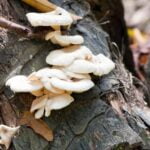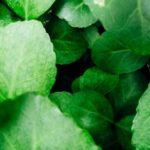Does your garden struggle with excess water and poor drainage? In this article, we will explore effective drainage ideas for gardens to help you transform your outdoor space. From the dangers of poor drainage to natural and DIY solutions, we’ll cover everything you need to know about improving garden drainage.
Proper drainage is essential for the health and vitality of your garden. Without it, plants can suffer from waterlogged soil and root rot, leading to stunted growth or even death. Additionally, poor drainage can negatively impact soil quality and make it difficult for beneficial organisms to thrive. By understanding the importance of proper garden drainage, you can take proactive steps to improve the overall health of your outdoor space.
In the following sections, we will discuss the dangers of poor drainage on plants and soil quality, as well as how to choose the right plants for improved garden drainage. We will also explore natural solutions such as rain gardens and swales, as well as creative landscaping ideas and hardscaping features that can help direct water flow in your garden.
Additionally, we will dive into DIY solutions like French drains and permeable pavers, as well as maintenance tips for long-term improvement.
The Dangers of Poor Drainage
Poor drainage in gardens can have detrimental effects on both the plants and the quality of the soil. When water is unable to properly drain from the garden, it can lead to waterlogged soil, which in turn can suffocate plant roots and lead to rotting. In addition, poor drainage also contributes to erosion, nutrient leaching, and overall reduced soil fertility. Understanding these dangers is crucial in order to implement effective drainage solutions for a healthier garden.
To combat the effects of poor drainage on plants and soil quality, it’s essential to choose the right plants that are more tolerant of wet conditions. Plants such as irises, astilbes, and ferns are well-suited for areas with poor drainage, as they thrive in moist soil conditions. By strategically selecting plants that can withstand excess moisture, gardeners can mitigate some of the negative impacts of poor drainage on their greenery.
In addition to carefully choosing plant species, implementing natural drainage solutions like rain gardens and swales can significantly improve garden drainage. Rain gardens are designed to collect and absorb rainwater runoff, while swales help direct water flow throughout the garden.
These natural solutions not only improve plant health by preventing waterlogging but also contribute to reducing erosion and enhancing overall soil quality. By incorporating these ideas into your garden design, you can effectively address poor drainage issues while creating a visually appealing landscape.
Choosing the Right Plants for Improved Garden Drainage
When it comes to improving garden drainage, choosing the right plants is a crucial step. Certain plants are better equipped to handle excessive water and can help improve the overall drainage of your garden soil. Here are some plant options to consider for improved garden drainage:
- Native Grasses: Ornamental grasses like switchgrass and little bluestem have deep root systems that can help absorb excess water and prevent soil erosion.
- Shrubs and Trees: Plants like willows, red maple, and dogwood thrive in moist soil conditions, making them ideal choices for gardens with drainage issues.
- Perennials: Plants such as black-eyed Susans, coneflowers, and asters are not only attractive but also tolerant of wetter conditions, making them great additions to a garden with poor drainage.
In addition to selecting water-tolerant plants, consider planting groundcovers like creeping Jenny or lamb’s ear to help prevent erosion and improve moisture retention in the soil.
Furthermore, incorporating raised beds with well-draining soil mix can also help mitigate drainage issues in specific areas within the garden. By carefully choosing the right plants and strategic locations for them within your garden, you can significantly improve its overall drainage and health.
Remember that in addition to these plant options, it’s essential to address any underlying structural or grading issues in your garden that may be contributing to poor drainage. By combining an array of different strategies, including proper plant selection, you can create an environment that supports healthy plants and thriving garden ecosystems.
Implementing Natural Drainage Solutions
When it comes to improving garden drainage, natural solutions such as rain gardens and swales can be highly effective. These environmentally-friendly options not only help to divert excess water away from the garden but also create a beautiful and functional landscape feature.
Understanding Rain Gardens
Rain gardens are designed to capture and filter rainwater, allowing it to slowly infiltrate into the soil. This helps to reduce surface runoff and prevent erosion, while also replenishing groundwater supplies. When planning a rain garden, it’s important to consider factors such as the slope of the land, soil type, and the types of plants that will thrive in varying levels of moisture.
Utilizing Swales for Effective Drainage
Swales are shallow ditches or depressions that are strategically placed to redirect water flow. They can be used to channel water away from low-lying areas or as a way to capture and absorb excess moisture. By incorporating swales into the garden landscape, you can protect plants from waterlogged conditions and prevent soil erosion.
Incorporating these natural drainage solutions not only improves garden health but also adds aesthetic appeal to outdoor spaces. With proper planning and implementation, rain gardens and swales can transform your garden into a sustainable and resilient ecosystem, ensuring optimal growth for your plants while managing excess water effectively.
Creative Landscaping Ideas for Better Garden Drainage
One of the most effective ways to improve garden drainage is through creative landscaping ideas. By strategically planning and implementing landscaping features, you can prevent water from pooling in certain areas and ensure that it flows away from your plants and soil.
One key landscaping idea for better garden drainage is to create raised beds. By elevating the soil, you can prevent waterlogging and provide better aeration for plant roots. Additionally, raised beds can help to direct water flow away from low-lying areas, improving overall drainage in your garden.
Another creative landscaping solution for better garden drainage is the use of rock gardens. These decorative features not only add visual interest to your landscape but also serve a functional purpose by allowing excess water to drain quickly through the rocks, preventing saturation of the soil. In addition, incorporating a variety of native plants with deep root systems in your rock garden can help absorb excess moisture and further enhance drainage.
Incorporating natural water features such as small ponds or streams can also contribute to improved garden drainage. Not only do these elements add a serene ambiance to your outdoor space, but they can also act as reservoirs for excess water during heavy rainfall, effectively managing and redirecting water flow throughout your garden.
When considering creative landscaping ideas for better garden drainage, it’s important to consult with a professional landscaper or horticulturist to ensure that your design aligns with the specific needs of your garden and local climate conditions.
Using Hardscaping Features to Direct Water Flow
Hardscaping features can be a great solution to help direct water flow in your garden and prevent issues with poor drainage. One effective hardscaping feature for managing water is the use of retaining walls. Retaining walls can help control erosion and provide a way to manage runoff from higher areas of your yard. By strategically placing retaining walls, you can create terraced levels that allow water to flow naturally downhill, preventing pooling and helping to manage excessive moisture.
Another hardscaping feature that can be utilized for directing water flow is the use of gravel or pebble paths. These paths not only add visual interest to your garden but also serve the purpose of guiding water away from trouble spots in your garden. By creating pathways with appropriate elevation, you can effectively channel water away from areas where it may cause damage.
In addition to retaining walls and gravel paths, consider incorporating decorative rock features or dry creek beds into your garden design. These landscape elements not only enhance the aesthetics of your outdoor space but also serve as functional solutions for managing excess water. When it comes to utilizing hardscaping features for directing water flow in your garden, creativity and strategic planning are key components for success.
| Hardscaping Feature | Function |
|---|---|
| Retaining Walls | Control erosion and manage runoff |
| Gravel or Pebble Paths | Guide water away from trouble spots |
| Decorative Rock Features/Dry Creek Beds | Enhance aesthetics and manage excess water |
DIY Drainage Solutions
When dealing with poor drainage in your garden, implementing do-it-yourself (DIY) solutions can be an effective and budget-friendly option. Two popular DIY drainage solutions are French drains and permeable pavers.
French Drains
French drains are a popular choice for addressing excess water in gardens. This system involves digging a trench and installing a perforated pipe surrounded by gravel to redirect water away from problem areas. The trench is then covered with filter fabric and topped off with soil and grass so that it blends seamlessly into the landscape. French drains are ideal for capturing surface water and preventing it from pooling or causing erosion in the garden.
Permeable Pavers
Another DIY option for improving garden drainage is the use of permeable pavers. Unlike traditional pavement, permeable pavers allow water to seep through the surface and into the ground below, reducing runoff and promoting infiltration. These pavers come in various materials such as concrete, brick, or stone, giving homeowners flexibility in incorporating them into their landscaping design. Permeable pavers not only help manage excess water but also add aesthetic value to the garden.
Incorporating DIY drainage solutions like French drains and permeable pavers can significantly improve the overall health and appearance of your garden, ensuring that excess water is effectively managed. By understanding these options and implementing them properly, you can transform your garden into a space that thrives regardless of weather conditions.
Maintaining and Improving Garden Drainage Over Time
As a garden owner, it is crucial to be proactive in maintaining and improving the drainage of your garden over time. Neglecting this aspect can cause various issues such as waterlogged soil, root rot, and poor plant growth. To avoid these problems, regular maintenance and upgrades to your garden’s drainage system are necessary.
One way to maintain good garden drainage is by regularly inspecting the condition of your existing drainage features. This includes checking for clogged gutters, blocked or damaged pipes, and any areas where water may be pooling. By addressing these issues promptly, you can prevent them from escalating into more significant problems.
In addition to maintenance, there are also several ways to improve garden drainage over time. For instance, one effective method is the installation of permeable pavers in walkways and patios. These pavers allow rainwater to seep through the surface and into the soil beneath, reducing runoff and excess water accumulation on the surface. Another option is the creation of raised beds or mounded planting areas, which can help enhance drainage by improving soil aeration and preventing waterlogging.
Lastly, incorporating natural solutions such as rain gardens and swales can further improve garden drainage over time. These features are designed to capture and absorb excess water during heavy rainfall, thus reducing the risk of flooding and erosion. By implementing a combination of these maintenance practices and improvement strategies, you can ensure that your garden maintains optimal drainage throughout the year.
| Maintenance | Improvement |
|---|---|
| Regular inspection of existing drainage features | Installation of permeable pavers |
| Addressing clogged gutters and blocked pipes | Creation of raised beds or mounded planting areas |
| Preventing areas where water may be pooling | Incorporating natural solutions such as rain gardens and swales |
Conclusion
In conclusion, incorporating effective drainage ideas for gardens is essential for maintaining the health and quality of your outdoor space. By understanding the importance of proper drainage and the dangers of poor drainage on plants and soil, gardeners can make informed decisions when it comes to improving their garden’s water management.
Choosing the right plants, implementing natural solutions such as rain gardens and swales, and utilizing creative landscaping ideas are all effective ways to enhance garden drainage. Additionally, hardscaping features can be strategically used to direct water flow away from vulnerable areas and prevent waterlogging. DIY solutions like French drains and permeable pavers also offer practical options for managing excess water in the garden.
While it may require consistent maintenance and periodic improvements, taking proactive steps to maintain and improve garden drainage over time will ultimately transform your garden into a thriving, healthy environment for plant growth. By implementing these effective drainage ideas, you can create a more sustainable and beautiful outdoor space that will flourish for years to come.
Frequently Asked Questions
What Is Best for Garden Drainage?
Good garden drainage is essential for the health of your plants. The best options for improving drainage include adding organic matter like compost or mulch to the soil, creating raised beds, and using permeable materials for pathways.
How Do I Make Drainage in My Garden?
To improve garden drainage, you can start by loosening compacted soil using a garden fork or tiller. Adding organic matter like compost or aged manure can also help improve soil structure and drainage. Consider creating raised beds to further enhance drainage.
How Do I Divert Water in My Yard?
Diverting water in your yard can be achieved by strategically placing downspouts to direct rainwater away from your home’s foundation and towards areas where it can safely drain away. Additionally, creating swales or dry creek beds can help manage water flow in your yard.

Welcome to my gardening blog! I am passionate about plants and enjoy sharing my knowledge and experiences with others. In this blog, I will write about everything related to gardening, from tips on how to get started to updates on my own garden projects.





